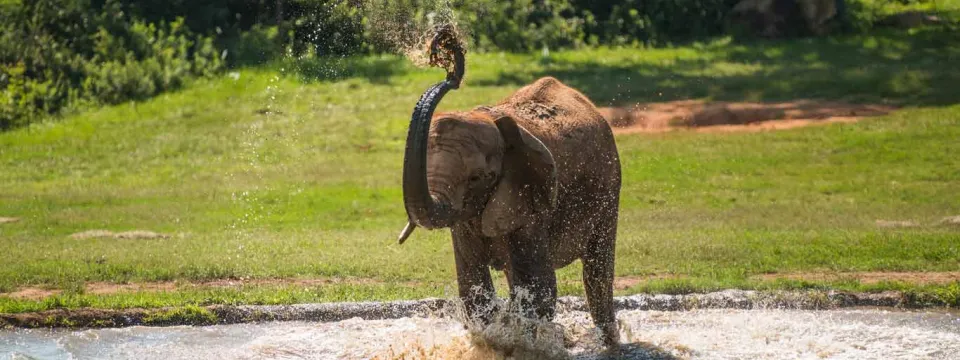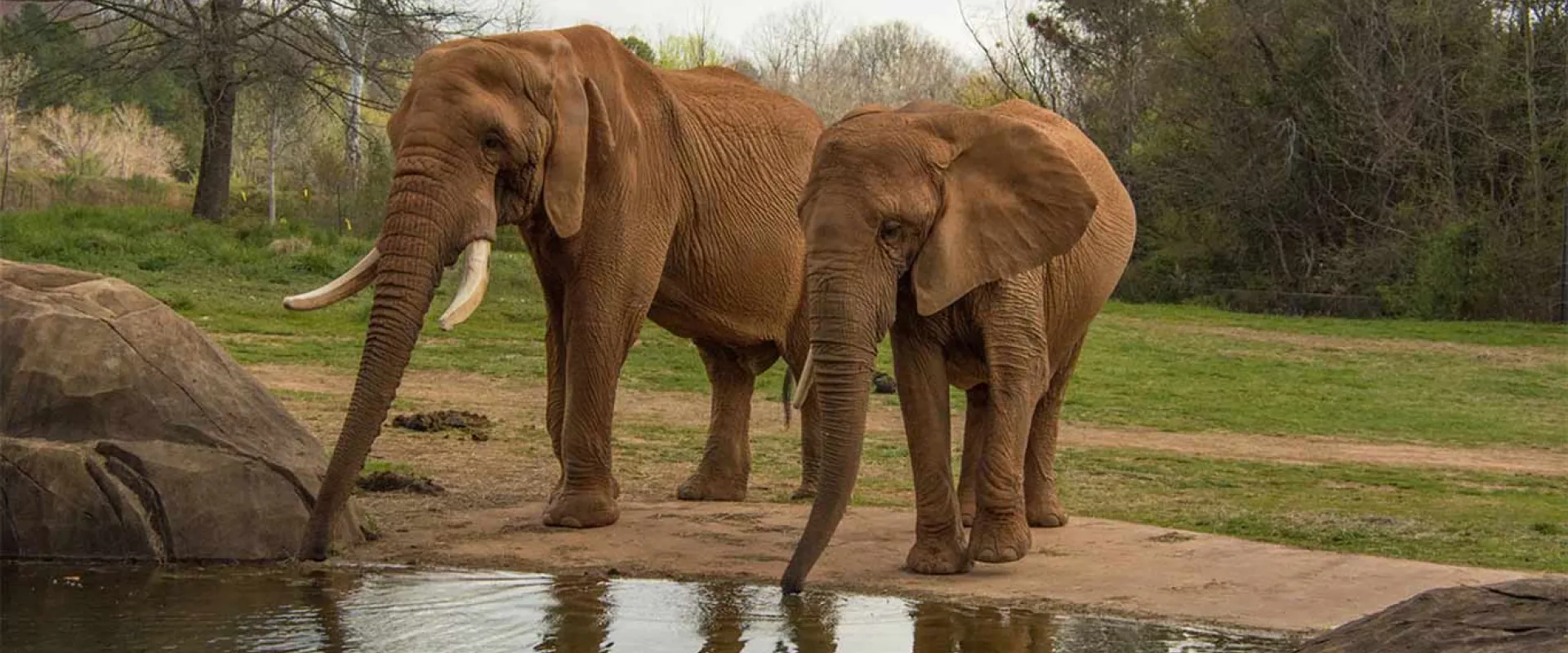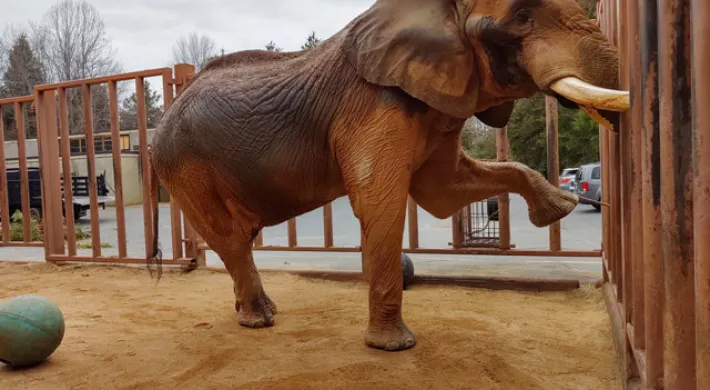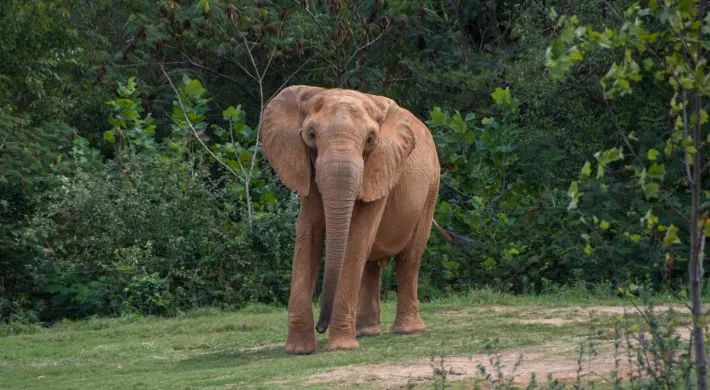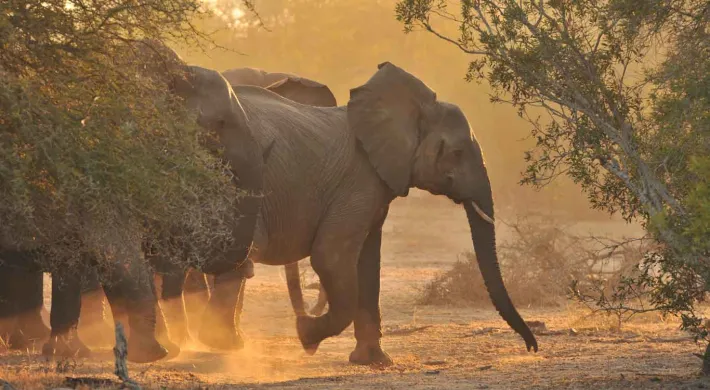Written by Hannah Tulloch, Digital Media Coordinator, North Carolina Zoo
What’s it like to manage a herd of elephants totaling over 65,000 lbs., you ask? Complicated.
Knowing and respecting the personality of each elephant is crucial for the successful management of the herd Animal Management Supervisor, Nancy Kauffman says, “We must know the personalities of each animal to make sure we’re giving [them] the resources they need to thrive. We take individual needs into account, so they are comfortable and want to participate.”
It is important to also know the social dynamics of the herd and know how a wild elephant herd works. Conservation and research are important and come in here to provide insight on herd structure and dynamics of wild elephants.

Elephants live in a matriarchal society, meaning they are female-dominated. The hierarchy is established based on the elephants’ personalities. The female with the strongest personality is typically the matriarch. Females can live in herds anywhere from 5-36+. While males are typically solitary during the breeding season, they have been known to form bachelor groups to socialize when breeding is done.
There are seven elephants at the North Carolina Zoo, three bulls and four cows, and six elephant keepers! Rafiki is the matriarch of the elephant herd at the Zoo. In the herd, there is a mother/daughter pair, Tonga and Batir respectfully. Funny enough, Batir is higher ranking than her mother since she has a strong personality and formed a bond with Rafiki.

Personality also comes into play when training elephants. Most training is for husbandry purposes, meaning the training that is done is for the care and physical wellbeing of the elephant. Elephants will be asked to present different parts of their body, such as an ear or foot. This allows the keeper to get a good look at the presented part of the elephant to make sure they are healthy. These behaviors are also used when veterinary treatment is needed, allowing the elephant to participate in its own health care.
Keeper Deb, C’sar’s main trainer cherishes the relationship she has built with C’sar, saying, “It has been amazing to see the positive changes doing yoga with C’sar. His overall range of motion has increased so much and he continues to push his limits by learning new poses. We have built our relationship on positive reinforcement and having him be able to trust me is a huge part of his success. He is always willing to try new things and picks it up quickly!”
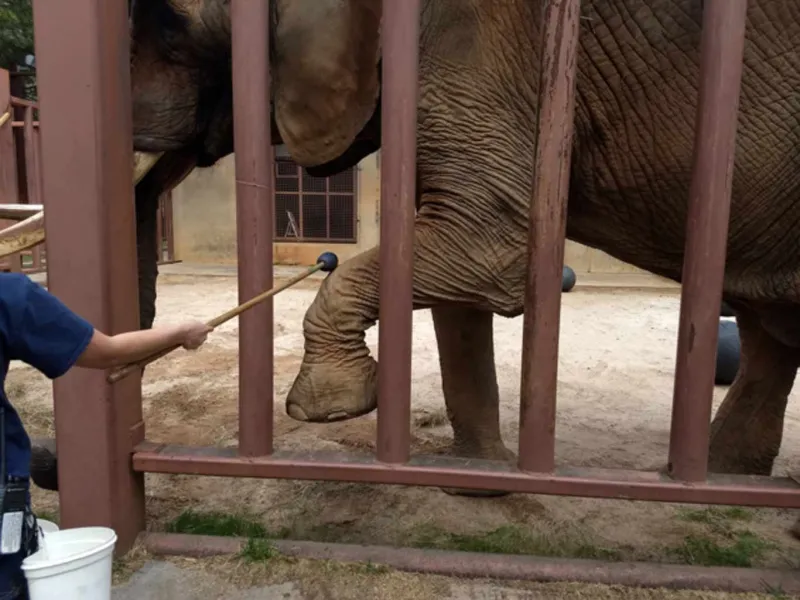
Keeper Deb working with C'sar on his yoga!
“My favorite behavior is ‘big ears’ where we ask the elephants to stick their ears straight out. We ask for individual ears to do blood draws and get a good look at the ears. They are also super adorable when they do this behavior,” says Keeper Alex.
Non-husbandry-related behaviors can be mentally stimulating for the animals such as learning to stack things such as boxes, and capturing different vocalizations - get them thinking and interact with their environment in new and different ways.
